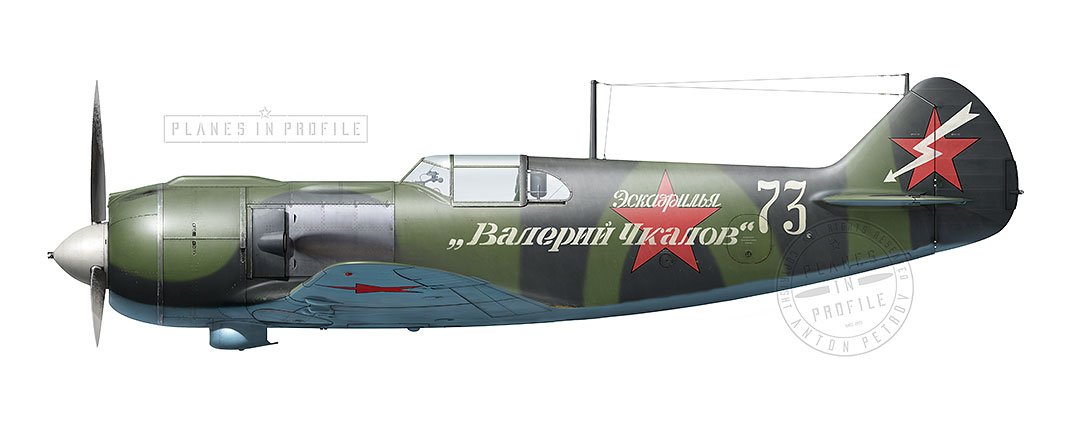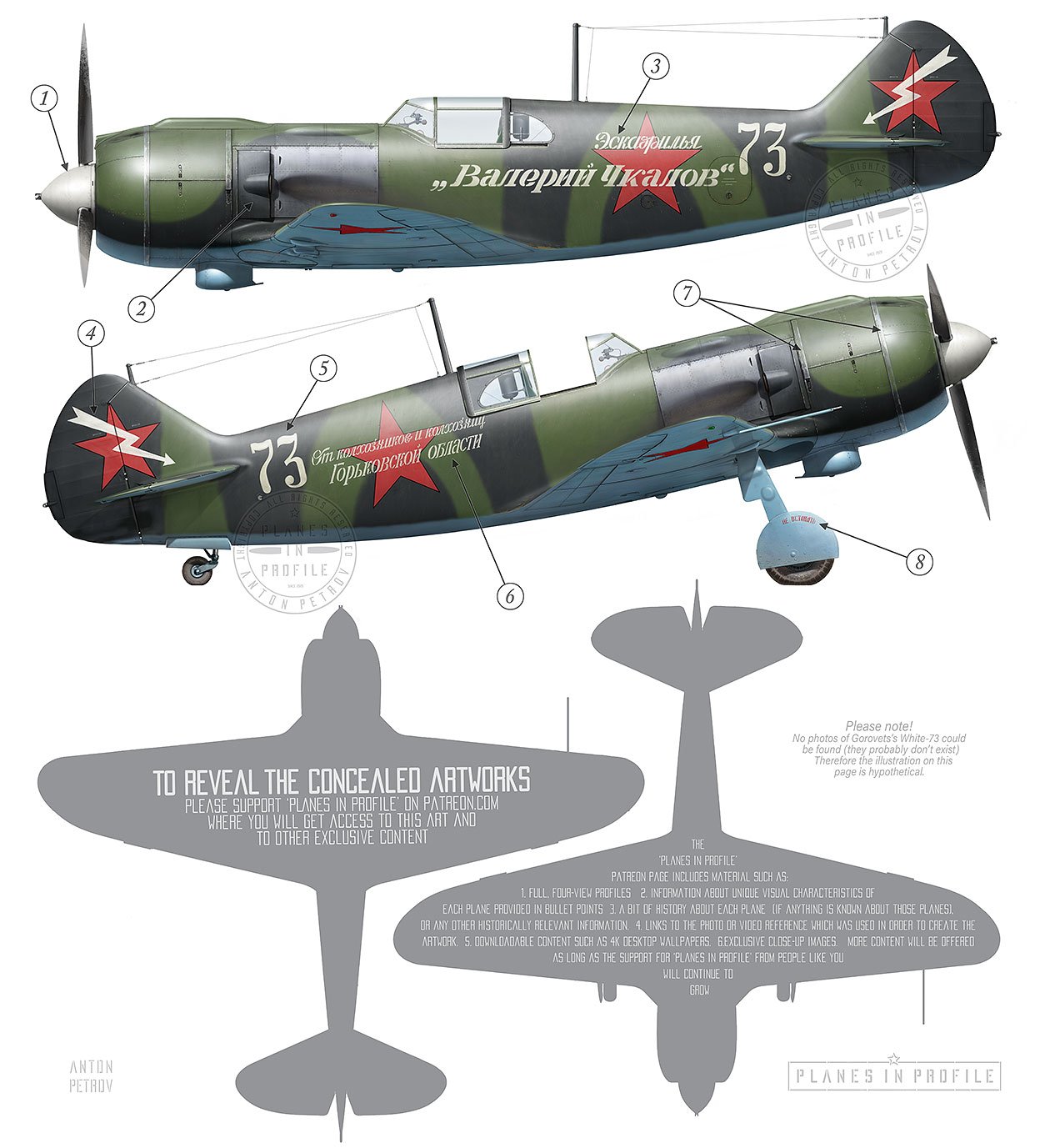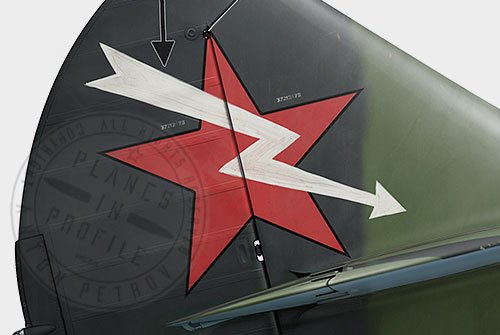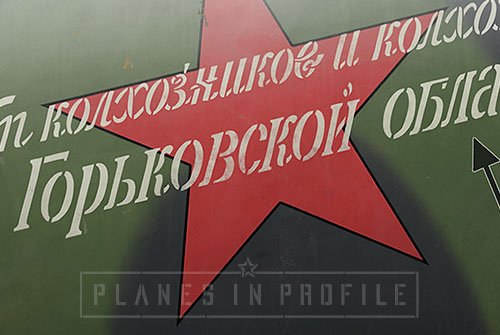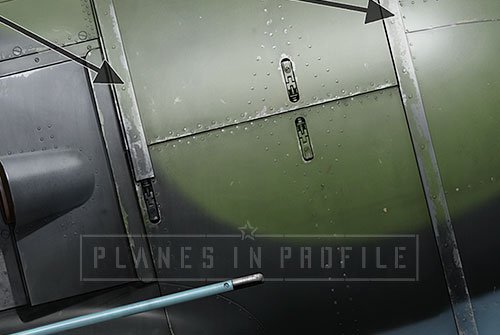Gorovets’s White-73
LAVOCHKIN, LA-5 (TYPE 37)
88th GIAP, 8th GIAD, 5th IAK, 2nd Air Army, Voronezh Front. July 5-6th 1943, Belgorod region.
Flown by the deputy commander of the 1st squadron, Guards senior lieutenant, Aleksandr Konstantinovich Gorovets. (An alleged Ace with 11 personal ( 9 of which are unconfirmed) and 2 shared victories )
Please Note! No known photos of this plane exist. The illustrations of White-73 are based on an image of White-84 which was presumably a very similar airplane from the same regiment, and on the information from a webpage by Aleksandr Kazakov, as well as various other sources.
166th IAP received their La-5 airplanes in December 1942 [7] and after training to fly them over a period of a few months it started to use them operationally when it rejoined the active army on the 12 of May 1943 [8]. A week before this, on the 5th of May 1943, for its exemplary executions of battle orders and a display of courage and heroism while doing it, 166th IAP was renamed into the 88th GIAP.
As part of the active army the regiment took part in battle action just north of Kharkiv. During this time, Gorovets scored his first two victories:
1) 02 June 1943, 1 He-111 (group victory) Проходы (Prohody) (Ukraine)
2) 03 June 1943, 1 Me-109 Микояновка (Mikoyanovka) (Russia)
Just over a month later, Gorovets went on to take part in the battle of Kursk, a battle that (according to at least one source) produced the costliest single day of aerial warfare[9]. Both sides in the battle amassed thousands of airplanes for this fight, with about 2110 aircraft on the Axis side and 2792-3549 on the Soviet side [10]. The battle is considered to have began on the 5th of July 1943, with the launch of the German offensive codenamed ‘Operation Citadel’. On that day Gorovets downed another two enemy airplanes:
3) 05 July 1943, 1 He-111 (group victory) южнее Драгунское (south of Dragunskoye) (Russia)
4) 05 July 1943, 1 Hs-126 Березово. (Berezovo) (Russia)
But the following day - the 6th of July 1943, would allegedly become the most legendary day in Gorovets’s life and his most fateful.
On that day, a squadron of 15 La-5s commanded by V.I. Mishustin, took off on a sortie to protect Soviet ground forces from enemy bombers in the area of ‘Vladimirovka - Kochetovka - Zorinskie Dvori - Olhotovka’ . Leading one pair of fighters was A. Gorovets. When the squadron was returning back, not having encountered any bombers, Gorovets with his wingman V. Rekunov flew as the last pair in the formation. Suddenly, the two of them were attacked by Me-109s from behind. Covering the leader, Rekunov rushed towards them. But at this time, Gorovets noticed a group of 20 enemy Ju-87 dive bombers. Gorovets's radio must have stopped working, because he was unable to inform the leader of the squadron about the appearance of the enemy. While his wingman was fighting the Me-109s, Gorovets turned his fighter and charged at the Stukas, alone.
Nearing the leading Stuka dive-bomber Gorovets opened fire and set it ablaze with the first rounds from his cannons. Then he mortally struck another enemy plane, and then a third. Gorovets maneuvered masterfully, escaping the deadly enemy fire and unforgivingly returned it with short, well-aimed bursts at close range. The enemy formations faltered and their pilots looked like they started to panic, while Gorovets attacked again and again, sending 8 enemy bombers to the ground. When he neared his 9th victim there was no more ammo left in White-73’s cannons and Gorovets went for ‘Taran’ [11]. His propeller tore into the tail section of the enemy sending the 9th Stuka to its death.
Gorovets managed to retain control of his damaged fighter and turn it in the direction of the home airfield. But on his way back he was jumped by two pairs of enemy fighters. Having squeezed all the remaining power out of his wounded White-73, Gorovets charged at the enemy. But he could not escape the fatal torrent of rounds which stitched the body of White-73. Thus perished the only Soviet fighter pilot who achieved 9 victories in one battle sortie, and thus his legend was born‘[12]
Gorovets’s victory record rose by 9 that day:
5-13) 06 July 1943, 9 Ju-87 Зоринские Дворы (Zorinskiye Dvori) (Russia)
This battle of a lone Soviet fighter against a formation of German bombers was allegedly observed by various people on the ground and the remains of 9 downed Stuka bombers were found in the area of the battle and the adjoining sectors of the map.
For this act of heroism, Gorovets was posthumously awarded the title of the Hero of the Soviet Union.
Various memorials exist commemorating this Hero, photos of these can be found in the links listed on warheroes.ru .
One of White-73’s cannons which was recovered from a wreckage of White-73 in 1957, was on display in a museum.
Having written all this, It must be mentioned that much controversy surrounds Gorovets’s last 9 victories. The reason being is because they have not actually been confirmed. The victory records of the Soviet regiments, divisions and the 2-nd Air Army, don’t include Gorovets’s 9 victories. Nor are these victories supported by the ‘losses’ records on the German side, nor were they confirmed by the captured German pilots. The 9 Stukas found in various sectors close to where the alleged battle took place, belonged to various Luftwaffe units (had they all been flying in a formation they would have all been from one unit) and some were downed by flak fire and at least one other was a confirmed victory by a different pilot.
It is not my intention to diminish the heroic achievements of a pilot who sacrificed his life in defence of his motherland (and possibly became an ace in the process- he might have downed some Stukas that day after all, elevating himself to an ‘Ace’ status). But based on the available evidence , many have concluded that the battle of a lone La-5 which claimed 9 enemy airplanes, was more likely to be the work of Soviet propaganda rather than a description of reality.
Noteworthy Visual Characteristics
1) According to the veterans, the spinners of the planes of the 8th GIAD have been painted ‘white’ for the battle of Kursk [1]
2) The cowl flap might have been painted ‘black’ . This is based on a photo of White-84, an airplane presumed to be very similar to Gorovets’s White-73, since both were from the 88th GIAP and both were an ‘Eskadril’ya Valery Chkalov’ airplane.
3) ‘Эскадрилья Валерий Чкалов’ (Eskadril’ya Valeriy Chkalov)- translates to ‘Squadron Valery Chkalov’. This inscription appeared on the airplanes built with the funds which were raised and donated to the ‘Red Army war fund’ by the workers of the Gorkiy (Today’s Nizhniy Novgorod) region. Many collective farms participated in this ‘fund raiser’ and a total of about 60, 000,000 roubles was raised [2], a further 1.1 million was raised by the Fire Brigades of the Gorkiy region [3] - astronomical amounts of money for that time. Even schools participated in the collection of funds for the E.V.Ch airplanes, and at least one airplane was known to have been built with these.
These funds were enough to build about 200 airplanes[4], mostly La-5s and some LaGG-3s, which were distributed across many different units, including the 3 IAK, as well as 11 IAP, 21 IAP, 159 IAP, 193 IAP, 4 GIAP KBF, 5 GIAP, 41 GIAP, 111 GIAP, 180 GIAP. [5]
Valeriy Chkalov was a famous Soviet test pilot who died in 1938 during a test flight of a Polikarpov I-180. He was from the Nizhniy Novgorod (former Gorkiy) region, which is why the airplanes bare his name.
Massimo Tessitori did some good research on the ‘Eskadrilya Valeriy Chkalov’ and it’s worth visiting his website HERE to learn more about the “Eskadrilya”.
We know that White-73 was one of the E.V.Ch. airplanes because this inscription was seen on the remains of this plane, found in October 1957 [6]
4) The white lightning on the tail is presumed to have been the identification marking of the 88th GIAP. I have based the shape of the lightning on that of White-84 which seems to be the only existing photo showing the tail section of an airplane of 88th GIAP, and is therefore the only reference for the lightning.
5) The number of Gorovets airplane is based on the remains of it found in October 1957 and the airplane’s serial number which according to A.Kazakov ends in ‘73’ . The two last digits of a serial number of Lavochkin airplanes represent the ‘tactical’ number of that airplane. There is also a memorial to Gorovets in the Vitebsk region, built at the site of an airfield from which White-73 took off on its last flight, called ‘The Last Flight’ . It’s a very inaccurate (probably stylised) reconstruction of a La-5, but the builders of this memorial have also used number ‘73’ for Gorovets’s plane.
6) ‘От колхозников и колхозниц Горьковской Области’ ( Ot kolkhoznikov i kolkhoznits Gor’kovskoy oblasti) - Translates to ‘From the collective farmers(male) and the collective farmers (female) of the Gorkiy region’.
I chose to use this inscription because it was the most common inscription that appeared on the starboard side of the E.V.Ch. airplanes, but sometimes this inscription was ‘ Gorkovskiy Pozharniy’ as can be seen on Devyatkin’s La-5.
I used a photo of ‘White-99’ and ‘White-40’ as my reference for painting the starboard side slogan on ‘White-73’. Note that there seems to be another, very very faint inscription under the star in the image of ‘White-99’. It doesn’t look like the same inscription appeared under the star of ‘White-40’ so maybe it was unique to ‘White-99’. For this reason I decided to not paint it on ‘White-73’ also.
7) The cowl bands were probably painted with much of the paint chipped off, exposing a lot of metal. It seems that’s how the lock ribbons of White-86 looked, and a photo of another plane from 88th IAP (White-04) seems to show these parts painted also.
8) The warning on the wheel shields might have read ‘Не Вставать’ which loosely translates to ‘Don’t get up (on top of) ’. This seems to have been more common to the early La-5 planes than the other variation of this warning which is ‘Не Становиться’ (loosely translates to ‘Don’t stand on’ ) which was more common to the later La-5 modifications.
Here are a few close-up images to help illustrate the points above. More close-up images are On Patreon
Footnotes
[1] This info is based on a discussion between M.Bykov and A.Kazakov in the comments on A.Kazakov’s web page.
[2] Based on Stalin’s telegram :
’Please convey my brotherly greetings and gratitude to the collective farmers of the Gorky Region, who have raised 60 million rubles for the Red Army fund to organize the Valery Chkalov combat aircraft squadrons. I. Stalin "
The quote was found here: http://www.chkalovsk-zbs.narod.ru/bibl/75let/Aviaeskadriliya.html
[3] The sum collected by the firemen is according to the contents of a telegram from Stalin, as described in an image from the National Archive of the Gorkiy Region.
[4] The number of planes is based on the information on page 79 of Miloš Veštšik’s book called ‘Lavockin La-5’, published by MBI in 2006.
[5] The list of regiments which received the Valeriy Chkalov airplanes was taken from the ‘Soviet aerial tactical markings of WWII’ website page. http://www.wio.ru/simbols/sov-en.htm
[6] This is according to an article by Oleg Kaminskiy https://proza.ru/2014/03/01/1216
[7] Based on the info found on http://ava.org.ru/iap/88g.htm
[8] This is based on the fact that the regiment, after training to fly their La-5, was again part of the active army from 12th of May 1943- the info is as per Russian Wikipedia entry about 88th IAP
[9] The info is according to the infographic by the Norwich University Online’s list of top 10 air to air battles. Kursk is number1 on their list.
[10] Number of planes is taken from the Wikipedia article about the Battle of Kursk, ‘Strength’ section.
[11] ‘Taran’ was what the Soviets called the act of using your own plane to ram the enemy. It was often performed by Soviet pilots when they were out of ammo. Sometimes the pilots managed to survive these attacks but often they didn’t.
[12] The description of the battle is my retelling of Gorovets’s battle , which I originally found on airaces.narod.ru and warheroes.ru
Summary of LINKS TO THE REFERENCE IMAGES AND VIDEOS
White-84, an airplane which in theory is very similar to Gorovets’s White-73.
Image 1
http://ava.org.ru/iap/88g/la5_84_1.jpg
Image 2
All the work presented on this is page is subject to updates and revisions in the light of new information which might present itself. If you have any new information relevant to this page or disagree with anything that's presented here, then please feel free to contact me through the Planes in Profile Facebook page. Thanks:)
Special thanks to Aleksandr Kazakov for his research, artwork, and answers, which helped to confirm some of the ‘visual characteristics’ of this airplane.

